Product pictures
| Amount Per 3 slices | |||
| Calories | 130 Kcal (544 kJ) | ||
| Calories from fat | 99 Kcal | ||
| % Daily Value* | |||
| Total Fat | 11g | 17% | |
|---|---|---|---|
| Saturated Fat | 4g | 20% | |
| Cholesterol | 35mg | 12% | |
| Sodium | 590mg | 25% | |
| Total Carbs | 1g | 0% | |
| Protein | 7g | 14% | |
| Iron | 0.6mg | 3% | |
* Percent Daily Values are based on a 2000 calorie diet. Your daily values may be higher or lower depending on your calorie needs.
Find out how many calories should you eat.
Ingredients And Nutrition Overview
Best
choice Good
choice Poor
choice Avoid
it!
choice Good
choice Poor
choice Avoid
it!
-
WeightWatchers Points: 3.5, PointsPlus: 4, SmartPoints: 4
WeightWatchers Points are estimated by carbohydrates, fats, protein and fiber in product. They are not an affirmation of better quality or nutritional value of the product or its manufacturer. Only way to count for dieters. Less points are better.
Read more at Weight watchers diet review -
Over 20% of daily saturated fat!
Bad! More 20% of daily saturated fat!
For years Saturated fat was claimed to raise cholesterol levels and give us heart attacks. Today different studies refute this claim. They say, that replacing saturated fat with carbohydrates or refined starch or sugar is not changing the heart disease risk. Not processed carbs nor saturated fats are good for you. Only if you replace it with polyunsaturated fat, you'll get a reduction in heart disease risk. So try to have a balanced diet. -
Keep an eye on the cholesterol.
Today cholesterol is no longer a villain. The 2010's USDA guidelines told us to limit cholesterol from foods
Now experts say cholesterol is "not a nutrient of concern" because cholesterol from foods doesn't cause higher blood cholesterol levels.
Nevertheless try to consume no more than 300 milligrams daily.
This product contains more than 12% of your daily cholesterol intake.
If you still are on a low cholesterol diet, please keep in mind:
- nutritionists are not recommending you go out and binge on cheeseburgers and fries.
- 10% of your daily allowance can quickly become 50% when a hamburger turns into double cheeseburger.
-
Want to lower the cholesterol intake? Here are some advices:
- Try to limit your cheese, dairy and meat intake to one item per meal.
- Avoid meals with multiple sources of cholesterol (chicken with cheese, junk food)
- Try to indclude in your diet low- or nonfat dairy, seafood, legumes and nuts.
- Choose water instead of milk for your coffee.
-
Salty! Has over 25% of the daily sodium max
The average American consumes 5,000 mg of sodium daily — twice the recommended amount amount of 2400mg for healthy adults, this is 1 teaspoon of salt.
For medical reasons many people should not exceed 1500mg of sodium.
Surprisingly, you're responsible for only 15% of the sodium in your diet the bigger part - 75% of the sodium that you consume each day comes from processed foods, not home cooking or the salt shaker.
Excess sodium intake increases the risk of high blood pressure, hypernatremia, hypertension, cardiovascular disease and other heart problems.
Are these reasons enough to cut the sodium intake? No doubt! -
Convert Salt tsps to Sodium mg easily
Salt (NaCl) is not excactly sodium (Na).
It is not right to use these terms as synonyms.
The FDA recommended limit of sodium is 2,300 mg per day (or even less - about 1500 mg while one is on low sodium diets).
This is much less than the weight of salt.
(5,750 mg per day or 3,750 mg for low sodium diet) and not so convenient to calculate.
Know how much sodium is in your salt - without a calculator:
1/4 tsp salt = 600 mg sodium
1/2 tsp salt = 1200 mg sodium
3/4 tsp salt = 1800 mg sodium
1 tsp salt = 2300 mg sodium -
Controversial additive BHT present
BHT (butylated hydroxytoluene) is primarily used as an antioxidant food additive, mainly to prevent oils and fats in foods from oxidizing and becoming rancid.
It is GRAS in the US, but forbidden as food additive in Japan (since 1958), Romania, Sweden, and Australia.
Some studies have shown that it is carcinogenic.
Avoid it, there are foods available without this danger. -
Contains nitrites/nitrates
This product contains one or more of the following: - Sodium nitrite - Sodium nitrate - celery powder Sodium nitrite and its closely related sodium nitrate are food preservatives used primarily in prepared meat and fish such as ham, bacon, hot dogs, corned beef (spam), luncheon meats, and smoked fish. They help the meat look nice and red instead of grayish. Unfortunately, when cooked or broken down in the stomach, nitrites form nitrosamines (also called N-Nitroso Compound), which can cause cancer in young children and pregnant women. Sources: ----------- S C Larsson, A Wolk - Red and processed meat consumption and risk of pancreatic cancer: meta-analysis of prospective studies Br J Cancer. 2012; 106(3): 603–607. Risch HA, Jain M, Choi NW, Fodor JG, Pfeiffer CJ, Howe GR, Harrison LW, Craib KJ, Miller AB. - Dietary factors and the incidence of cancer of the stomach. Am J Epidemiol. 1985;122(6):947-59. Ji BT, Chow WH, Gridley G, Mclaughlin JK, Dai Q, Wacholder S, Hatch MC, Gao YT, Fraumeni JF Jr. - Dietary factors and the risk of pancreatic cancer: a case-control study in Shanghai China. Cancer Epidemiol Biomarkers Prev. 1995;4(8):885-93. Nöthlings U, Wilkens LR, Murphy SP, Hankin JH, Henderson BE, Kolonel LN. - Meat and fat intake as risk factors for pancreatic cancer: the multiethnic cohort study. J Natl Cancer Inst. 2005;97(19):1458-65. Aschebrook-Kilfoy B, Cross AJ, Stolzenberg-Solomon RZ, Schatzkin A, Hollenbeck AR, Sinha R, Ward MH. - Pancreatic cancer and exposure to dietary nitrate and nitrite in the NIH-AARP Diet and Health Study. Am J Epidemiol. 2011;174(3):305-15. Preston-Martin S, Pogoda JM, Mueller BA, Holly EA, Lijinsky W, Davis RL. - Maternal consumption of cured meats and vitamins in relation to pediatric brain tumors. Cancer Epidemiol Biomarkers Prev. 1996;5(8):599-605. Knekt P, Järvinen R, Dich J, Hakulinen T. Knekt P, Jarvinen R, Dich J, Hakulinen T. - Risk of colorectal and other gastro-intestinal cancers after exposure to nitrate, nitrite and N-nitroso compounds: a follow-up study. Int J Cancer. 1999;80:852–856. Zhu Y, Wang PP, Zhao J, Green R, Sun Z, Roebothan B, Squires J, Buehler S, Dicks E, Zhao J, Cotterchio M, Campbell PT, Jain M, Parfrey PS, Mclaughlin JR. - Dietary N-nitroso compounds and risk of colorectal cancer: a case-control study in Newfoundland and Labrador and Ontario, Canada. Br J Nutr. 2014;111(6):1109-17.
-
For dieters: FoodPoints value is 3
* FoodPoints are calculated by Fooducate based on fats, carbs, fiber, and protein. They are not an endorsement or approval of the product or its manufacturer. The fewer points - the better.
-
Highly Processed!
This product is highly processed. If you'll take a look at its ingredient list, you'll discover new words to add to your vocabulary. Many of theses ingredients are required to increase the shelf life of the product and improve the flavor that disappears when food is not fresh.
-
Lunch meats, why the bad rep?
Lunch/deli meats come in different levels of quality. Some are more processed than others. Some have more fat than others. Some are better cuts of meat than others. And some contain nitrites, which you really gotta watch out for. The commonality between all lunch meats is the large amount of salt they contain. As a simple example, 3 oz of sliced turkey contains 1000 mg of sodium!! That’s almost half the recommended daily intake! Even our top rated product in this category still does not meet the recommended amount of sodium a product should contain (less than 120mg per 3 oz). Our advice? If you really can’t live without your turkey on rye sandwich, try to have these meats in small amounts and and stick to the lower fat, less processed versions.
-
Natural flavors added. Learn why
Companies add flavorings to make products taste better. They are created in a lab and the formulations are guarded as trade secrets. Flavorings can compensate for flavor loss during processing, substitute for ingredients, lower production costs and increase shelf stability. Natural flavorings are more expensive to source than artificial flavors, but tend to be better received by consumers. People sensitive to MSG, vegans, vegetarians and those with allergies should pay special attention to the phrase "natural flavorings" since glutamates, animal products or allergens may be the source of natural flavors. You can always contact the manufacturer for more information.
Allergens
Corn Allergy, Milk Allergy
You Might Also Like
% RDI of Main Nutrition Facts
7%
of RDI* (130 calories) 0 g
-
Cal: 6.5 %
-
Fat: 16.9 %
-
Carb: 0.3 %
-
Prot: 14 %
-
0%25%75%RDI norm*
Calories Breakdown
- Carbs (3.1%)
- Fat (75.6%)
- Protein (21.4%)
Get Your Recipe of Health!
Follow RecipeOfHealth on Facebook!

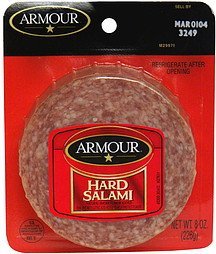
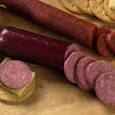
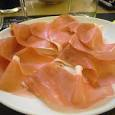
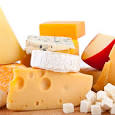
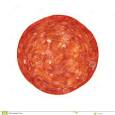

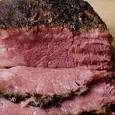
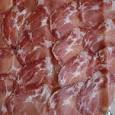
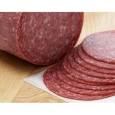
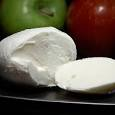
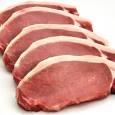


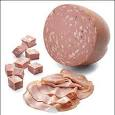
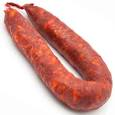
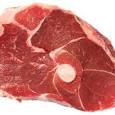
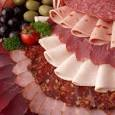









Add your comment